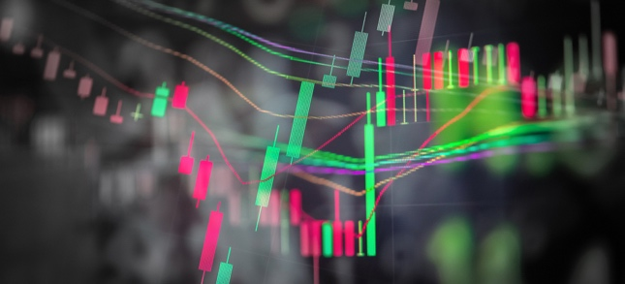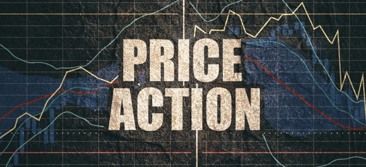Understanding what is price action analysis

In this article, I would like to speak about the object of Price Action analysis. However, first and foremost, you need to know what is the difference between this analysis from, say, graphic or indicator ones.
Graphic analysis, for example, implies detecting (price) patterns that often reflect market processes of supply/demand (sellers and buyers). Say, a Triangle pattern in the price's way is quite usually a trend continuation formation. In essence, a trader who uses graphic analysis only needs to know this fact ("a Triangle is a trend continuation pattern") to make a trading decision. This simplifies analysis but creates certain limitations.
If the trader wants to get into the details of the price movement, so this explication is not enough for them - they need to understand market mechanisms more precisely. This leads them to Price Action analysis.
What is Price Action?

Some say that Price Action analysis is just the analysis of simple candlestick combinations. For example, Rails or a Pin Bar predict a reversal; a breakaway of the Inner Bar calls for buying, etc.
In fact, such a simplistic approach to Price Action analysis will hardly turn out efficient. Just think that if you attempt at understanding the market "from scratch", your analysis must become more elaborate rather than simpler; the number of nuances and fact that must be taken into account will grow non-linearly, so you will have more pains making decisions because the number of conflicting elements of the picture will increase (you will have more signals for both buying and selling).
However, in reality, a trader does not need to see and understand everything: in the end, everyone trades in one or two trading style(s) and checks for a limited number of events, such as breakaways of ranges or the appearance of trends 2-3 weeks long. Nonetheless, the very understanding of Price Action frees the trader from being tied to certain patterns as they start operating principles and become capable of finding opportunities in almost any market.
On the one hand, increased information load requires filtering it, focusing on a limited number of market situations but on the other hand, this allows you to see more in situations when the market does not form a clear template or gives no ready-made answers.
What does Price Action analysis contain?
Understanding patterns
A pattern is a template that lets you define a current market process more or less precisely. For example, if we see a candlestick with a large body and several other candlesticks that have their bodies inside the first one, we can suppose that the market is Accumulating, and the price will spend at least a couple of hours inside the Accumulation. What does this knowledge give us? For example, if we were going to buy by the trend, we will need to wait for the price to escape the Accumulation, or for the latter to come to an end. On the other hand, we can detect a 1-2-3 pattern, which is normally a sign of a reversal beginning. Below, I will describe the most frequent Price Action patterns.
However, knowing patterns is not enough - you will not gain a statistical advantage if you just learn the patterns because market predictability is quite low, rarely above 60% (much smaller in reality). Forecasts seldom fully correlate with real events. Any forecast must be supported by price dynamics - whether it confirms the forecast or not.
Watching price dynamics
This point is called "watching price dynamics" not without a reason: on backtests, things look smooth and beautiful, but in real-time, the market hardly ever goes smoothly from point A to point B. Much more often, the price leaps here and there, perplexing traders. Well, how could we use this information?
In fact, price dynamics are the thing that can indirectly show us what is going on in the market. For example, increased aggression and speed of price motions are likely to indicate a lack of directed demand or supply (when the asset is being accumulated for medium- and long-term investments) and a subsequent lack of a trend. A combination of slow, "sticky" movements in consolidations and fast flashing breakaways along with the trend will, on the other hand, indicate trend scenarios.
Thus, such non-formalized parameters as market aggression or tempo in combination with certain price levels can provide the trader with useful information and increase their advantages.
Understanding market logic
Market logic is the understanding of the horizons and interests of the market's driving force. For example, if there is accumulation on the side of smart money (professional demand), most probably, the distribution phase will follow sooner or later, when most traders will be buying thoughtlessly, regardless of the price, paying more and more for the asset. Then we will see sharp climaxing movements. In such times, a professional buyer gets a good chance of closing their position. After which, the market will be left without support and correct shortly.
Uniting all the three elements above, we will get a holistic Price Action analysis that allows the trader to be a step ahead of the market and have certain advantages in their trading decisions.
First and foremost, let us dispel certain myths. A Price Action analysis is often mixed up with simply following the price. "The price goes up, we buy, the price goes down, we sell" (or - "goes down - we buy, goes up - we sell"). In reality, this process is much more complicated, and if plain approaches based on following the price worked regularly, there would be more traders making good money.
Let us find out what is the price? The question is not as primitive as it seems.

Main functions of the price
The price reflects the last closed trade
Here, things are quite clear, the quotation is placed at the point where the last trade happened, no matter who made the first step, a seller or a buyer.
The price "advertises" the asset and attracts buyers/sellers
Here, things are more interesting. The market is, in essence, an open auction, and if we recall the process of normal auctioning, we will realize how things go on in the market.
Imagine an auction where antiques are sold. The auction house offers a certain object for 1,000 GBP (the best auction houses are usually British) but no one turns out to want this object for such a price. The price is decreased - 950, 900, 850, 800 GBP; at last, a gentleman on the left is ready to buy for 800 GBP. However, an elderly lady offers 850 GBP. Then all the participants get involved, and the price easily overcomes 1,000 GBP from where trades started. What happened? Did the participants realize the value of the lot? What worked here is the mass effect, rivalry, the fear of missing something important - anyway, the auction process has little in common with assessing the real price of an object.
The market process is similar with the only difference that the offer in the market (the number of offered assets) is less limited, so the price goes up and down and up again.
Hence, a price motion can be just advertising. Will additional sellers/buyers be attracted by lifting/dropping the price? To answer this, you do not only need to know what the price was doing earlier (went up, down, or got stuck in a range), you need to know the logic of market players.
All in all, you need to know what the traders' involvement is at a certain price level; which traders (horizon-wise) can enter the market (medium-term, short-term ones); if there are traders already in positions who will panic and flee.
Summing up
Of course, no one has a "magic crystal" and knows all the answers - but there are observations that increase your chances for a correct answer. I call the capability of correctly assessing traders' involvement and behavior "market logic"; we will discuss it in a separate article.
Thus, Price Action analysis is not only the knowledge of what the price was doing but also speculating on the behavior of traders that the price actions are based on.
By Dmitriy Gurkovskiy, Chief Analyst at RoboForex



